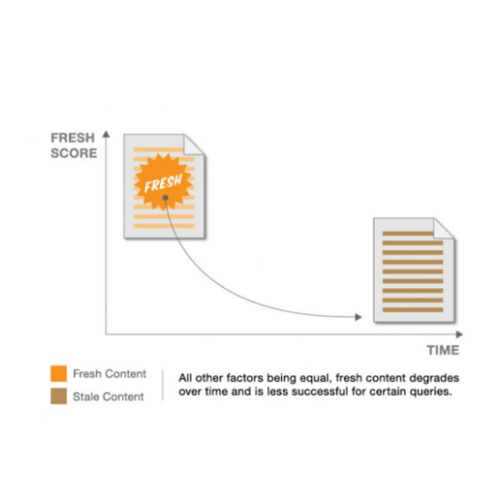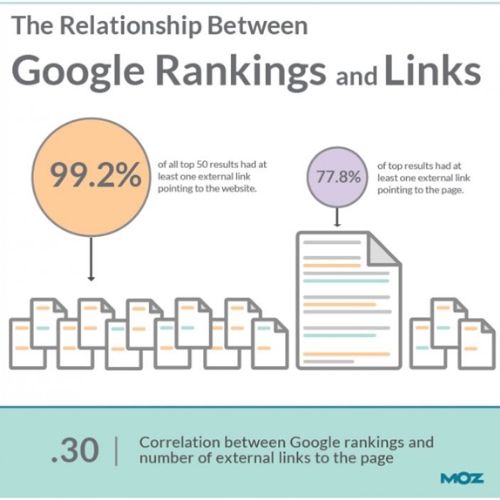There are at least a billion websites out there, and half of those online businesses have admitted that generating quality traffic to their website is their biggest marketing challenge. Let's face it; the main goal of any website is to generate revenue. And, you can’t generate revenue if you don’t have enough visitors to your site. According to GO-Globe, 60% of people who conduct an online search on mobile phones or PCs visit the physical store within 24 hours. As per reports from VPN Mentor, sales for eCommerce has topped $6.453 billion in last year alone. The bottom line is that quality website traffic can lead to huge revenue in your online business. Designing and developing a website should be the start, not the destination. Once it's live, you want your website to get noticed. In that light, here’s a list of top four proven strategies that will help you increase your website traffic.
1. Upgrade old blogs
According to Maxburst’s Andrew Ruditser, “People prefer reading a post from last month than the one posted two years back because the older post may consist of outdated content.” The organic traffic of HubSpot increased by 106% after they updated their older contents. The company almost tripled its number of leads on a monthly basis by optimizing old blog posts. It decreased by 75% though lately because they posted a lot of low-quality content. Here is an illustration from Moz that shows how your original posts gradually become uninteresting.

Updating old posts increases not only the effectiveness of your SEO efforts but also boosts your website traffic. When you upgrade your older content, you make it more appealing to your potential as well as existing customers.
Tips for updating your older blog posts:
Step 1: Determine the content that needs refreshing
According to P5 Marketing’s Robert Donnell, it is vital to identify the blog posts that drive the most traffic. Are they six months old? Then you should update them and keep updating them regularly.Step 2: Rework old titles and make them more SEO-friendly
Titles such as “A Few Fun Ways To Spend Your Friday Evenings”may sound cute but won’t be of help if these are months old. Rephrase the title and make it sound fresh such as “Doing These Won’t Let Your Friday Evenings Go to Waste.” Include your keywords to increase the CTR of your blog.Step 3: Add related posts and link internally
Say you wrote a post about ‘How to write assignments quickly?’ You have mentioned something about attaining higher grades in that content. In that case, you can write an entirely new post on 'How to attain good grades in your assignment help?’ and link that page to your older blog.Step 4: Add updated keywords
Adding updated keywords to your older posts can also help you refresh the posts. Make sure the keyword density is adequately maintained throughout the content. Incorporate the keyword in the title, headings and sub-headings to improve your SEO and increase your website traffic. Remember, your old blog posts are way valuable than the new posts. The majority of traffic usually goes to old posts. They attract more visitors and attract a lot of organic search traffic. But you may end up losing these benefits if you don’t upgrade them. So, implement the tips and improve the quality of your older posts with ease.2. Create viral contents

Neetzan Zimmerman, VP of Growth at Lightspeed, said: "I never self-promote.” Zimmerman included an article for Gawker that drew nearly 11 million views in 7 months. This is proof that we don’t need thousands of posts to attract traffic to our website. Instead, it is about publishing the right type of content that will circulate rapidly from one user to another. And, THAT is the definition of viral content. Pulling off a viral post is not easy. Remember that the content must be worthy of being shared if you want to make it viral. It has to enhance your reader’s life, make things better for your target audience or solve a particular problem. Would you be interested in sharing content that serves no purpose? Think about it.
Tips for creating viral content:
1. Opt for search engine domination
All of us know that search engines offer the most sustainable traffic to your website. The first step in creating viral content is to use potentially viral and low-competition keyword phrases. The next step is to optimize your content for these keywords.2. Make your target audience look smart
Viral contents needn’t be only blog posts. It could also be a YouTube video, a Tweet or even a Facebook post. No matter what your form of content is, it should make your readers look smart. LinkedIn, for example, sent out emails to members who were part of the top 5% of the most viewed profiles. Tons of people spread this good news on Facebook, TikTok, LinkedIn and X/Twitter, thereby helping LinkedIn get thousands of new members.3. Take a human perspective
You don’t want your readers to assume that a robot has written content, do you? Thus, you must always try to embrace a human angle while writing your content. This will help your readers relate to your content better and be more interested in sharing the posts.4. Make it as interactive as possible
Let’s say that your target audience is interested in the fashion industry. In that case, your content should be strictly related to the fashion industry only. How can you expect them to share your content if it’s related to academic? You can try delivering interactive content such as quizzes to make it more shareable. You must also consider the headings of your viral content. As per research by Conductor, if your headlines consist of numbers, it has 36% more chances of generating clicks. According to HubSpot, you can add brackets in your headlines for more clicks and shares. Before writing viral contents, it could also help if you will do a detailed content analysis research.3. Generate quality backlinks

In layman terms, backlinks are links that come from another website to your website. These links can come from blog posts, the content of other websites ,directories or social media sites. Google looks at how many backlinks you have and how authoritative they are. Here is an illustration that shows the relationship between Google rankings and links.

There are two types of backlinks- do-follow and no-follow. Each link holds different value with Google. Do-Follow backlinks increase the value of your web pages. No-follow backlinks, on the contrary, are HTML attributes that signal the search engines that the links shouldn’t affect the ranking of the website.
Tips to generate quality backlinks:
• Write guest posts regularly
Guests posting is the technique of contributing high-quality content to another website in exchange for a backlink. Identify the list of appropriate sites that can accept your guest posts. Once your guest posts are published on another website, it can get more exposure. Guest blogging on authority blogs in your niche will help you increase your referral traffic, reach new audiences and help you leverage other blogs' communities.• Create relevant and impressive infographics
Relevant and creative infographics can boost the traffic to your site by nearly 12%. It is one of the most popular visual marketing methods for bringing traffic to your website. Infographics are important because they are easy to understand and take only a few seconds to share.• Stay updated with your competitor’s backlink strategies.
You can subscribe to the email newsletters of your competitors to stay updated with their backlinking strategies. You are most likely to get a notification if they publish a new blog or guest article on a website. Follow the links and try submitting a better-quality content on the same site for quality backlinks.• Use the broken-link building method.
This technique involves informing a webmaster about broken links present in his/her website. Then you recommend other websites to replace that link. Of course, you have to mention your website so that the webmaster provides a backlink to it for doing a favor to him/her. No matter which strategy you pick to generate backlinks for your website, make sure you don’t violate Google’s Webmaster Guidelines. You shouldn’t participate in link schemes, pay for the links or try to game the system in any way. These tactics will do more harm than good to your website traffic.4. Take care of the on-page optimization of your site
Thefirst five organic results on Google account for nearly 67.6% of all clicks. BrightEdge found out that organic traffic contributes at least 40% revenue in multiple fields such as Business Services, Hospitality, Technology and the Internet. According to Search Engine Watch, 94% of clicks on the SERPs go to organic results. So yes, on-page SEO, if done right, can drive 300% more traffic than any other sources. On-site SEO helps search engines understand what your website is about and whether it is relevant to your target audiences’ query. A combination of perfect on-page SEO and other marketing channels can boost your overall marketing campaigns. Thus, it will be 10X easier for you to drive quality traffic to your website.





3 Comments
Thanks for this. I can see how this can help me increase my website’s traffic.
Thanks for sharing this information, Olaila Lee.
You have mentioned some amazing tips into the article. Content is king, and website development today entails building websites and web apps with high-quality content.
Some of the few important hacks that can increase the traffic of your website are to create valuable and helpful content, make use of social media platforms, run ad campaigns that are relevant, offer valuable discounts and deals, etc.